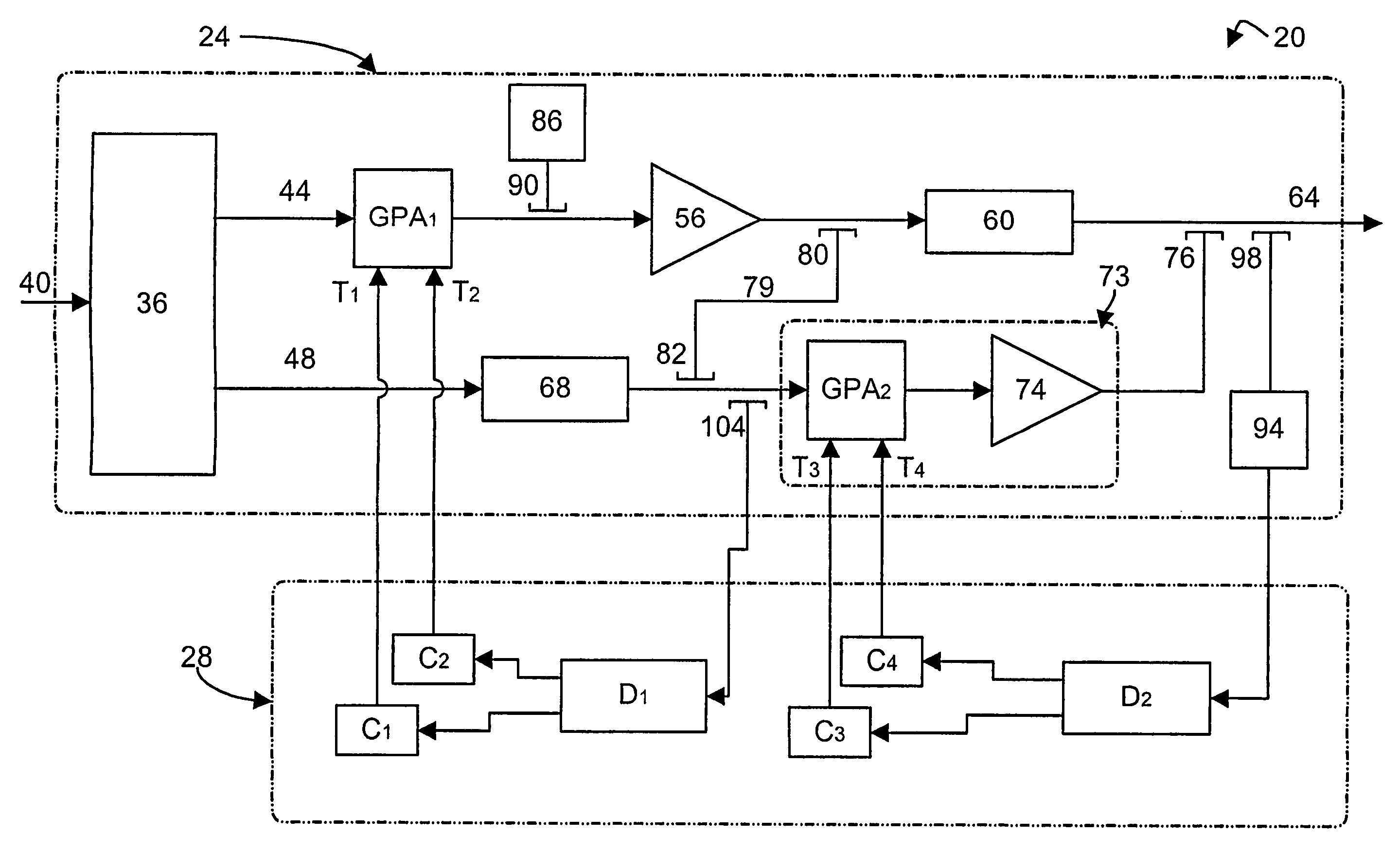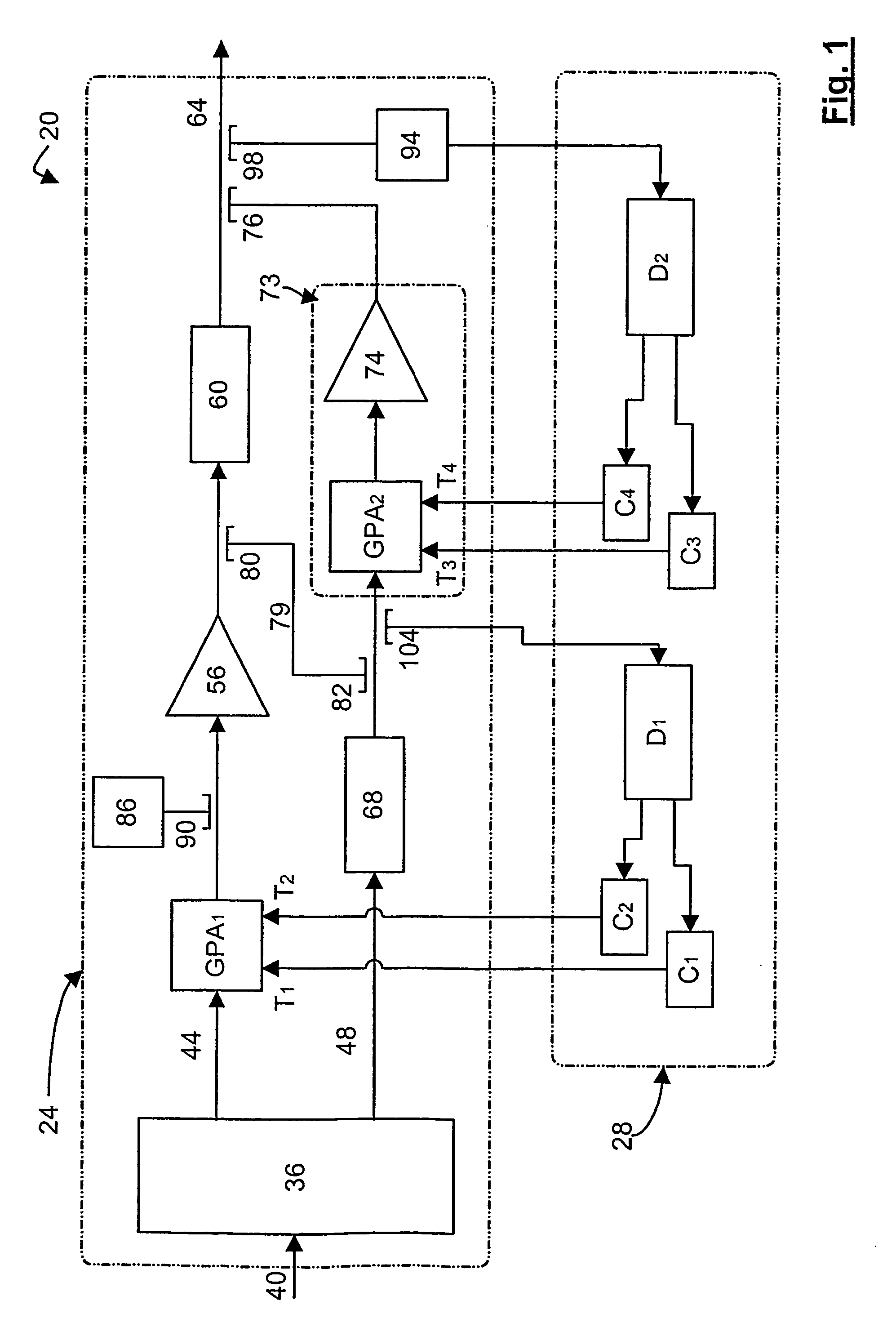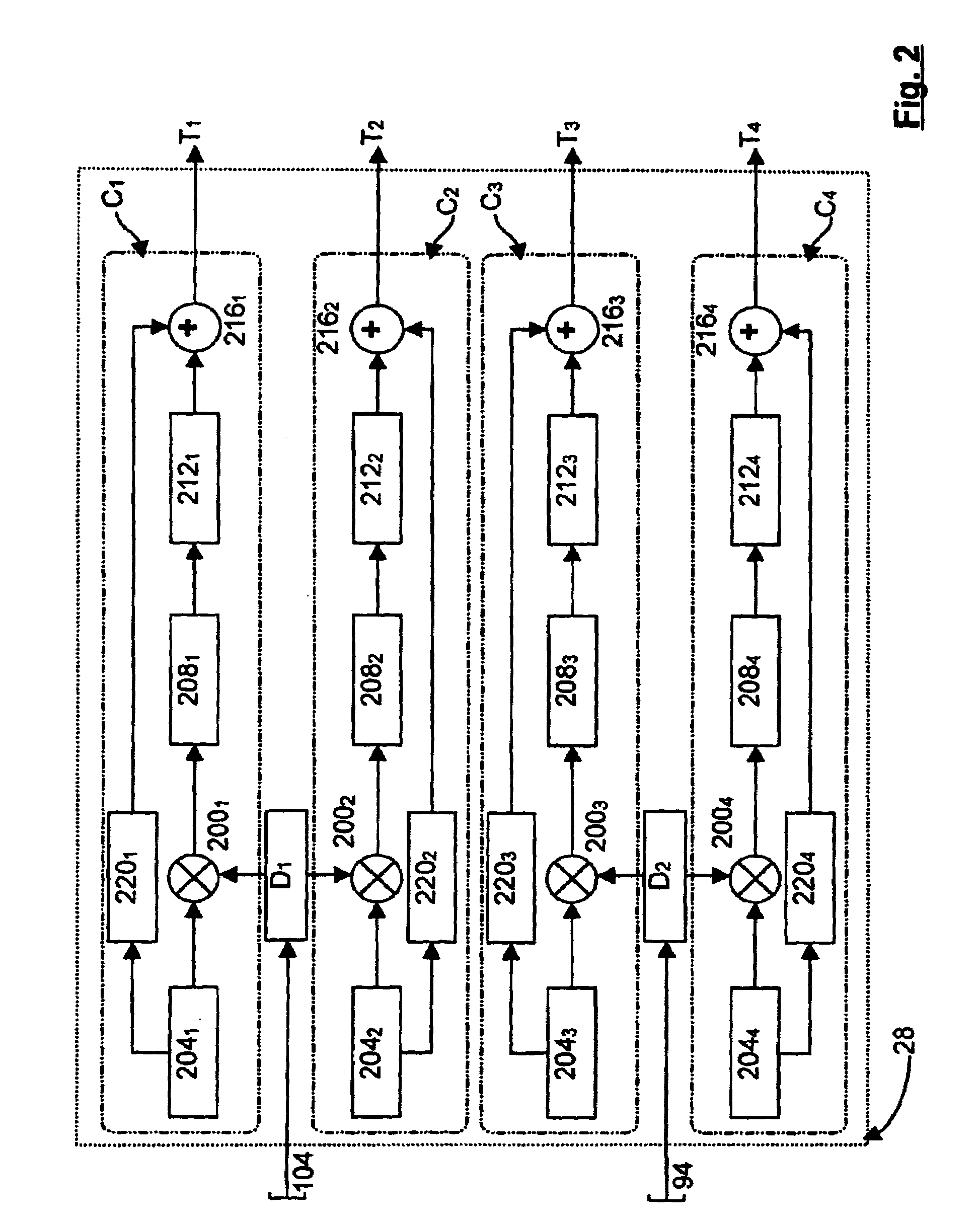Apparatus and method for controlling adaptive circuits
a technology of adaptive circuits and apparatus, applied in the field of adaptive circuits, can solve the problems of affecting the response speed of detector-controller circuits, affecting the optimum level of each tap of each adjuster, and affecting the optimum level of each tap
- Summary
- Abstract
- Description
- Claims
- Application Information
AI Technical Summary
Benefits of technology
Problems solved by technology
Method used
Image
Examples
Embodiment Construction
[0057]Referring now to FIG. 1, a forward feed amplifier (“FFA”) in accordance with an embodiment of the invention is indicated generally at 20. FFA 20 comprises an amplifier portion 24 and a detector-controller portion 28. Amplifier portion 24 includes a coupler 36 that is connected to an input signal path 40. Coupler 36 is operable to split an incoming signal from path 40 into a main amplifier signal path 44 and a correctional amplifier signal path 48.
[0058]Main amplifier signal path 44, which carries the main signal from coupler 36, includes a gain and phase adjuster GPA1, a main amplifier 56 and a delay element 60 that outputs to an output signal path 64. GPA1 includes a gain control input tap T1, and a phase control input tap T2, each of which can be steered so that GPA1 operates to yield maximum signal cancellation at the output of coupler 82 and the input of coupler 104, as discussed below. The location in the circuit at which maximum signal cancellation is to occur is sometim...
PUM
 Login to View More
Login to View More Abstract
Description
Claims
Application Information
 Login to View More
Login to View More - R&D
- Intellectual Property
- Life Sciences
- Materials
- Tech Scout
- Unparalleled Data Quality
- Higher Quality Content
- 60% Fewer Hallucinations
Browse by: Latest US Patents, China's latest patents, Technical Efficacy Thesaurus, Application Domain, Technology Topic, Popular Technical Reports.
© 2025 PatSnap. All rights reserved.Legal|Privacy policy|Modern Slavery Act Transparency Statement|Sitemap|About US| Contact US: help@patsnap.com



